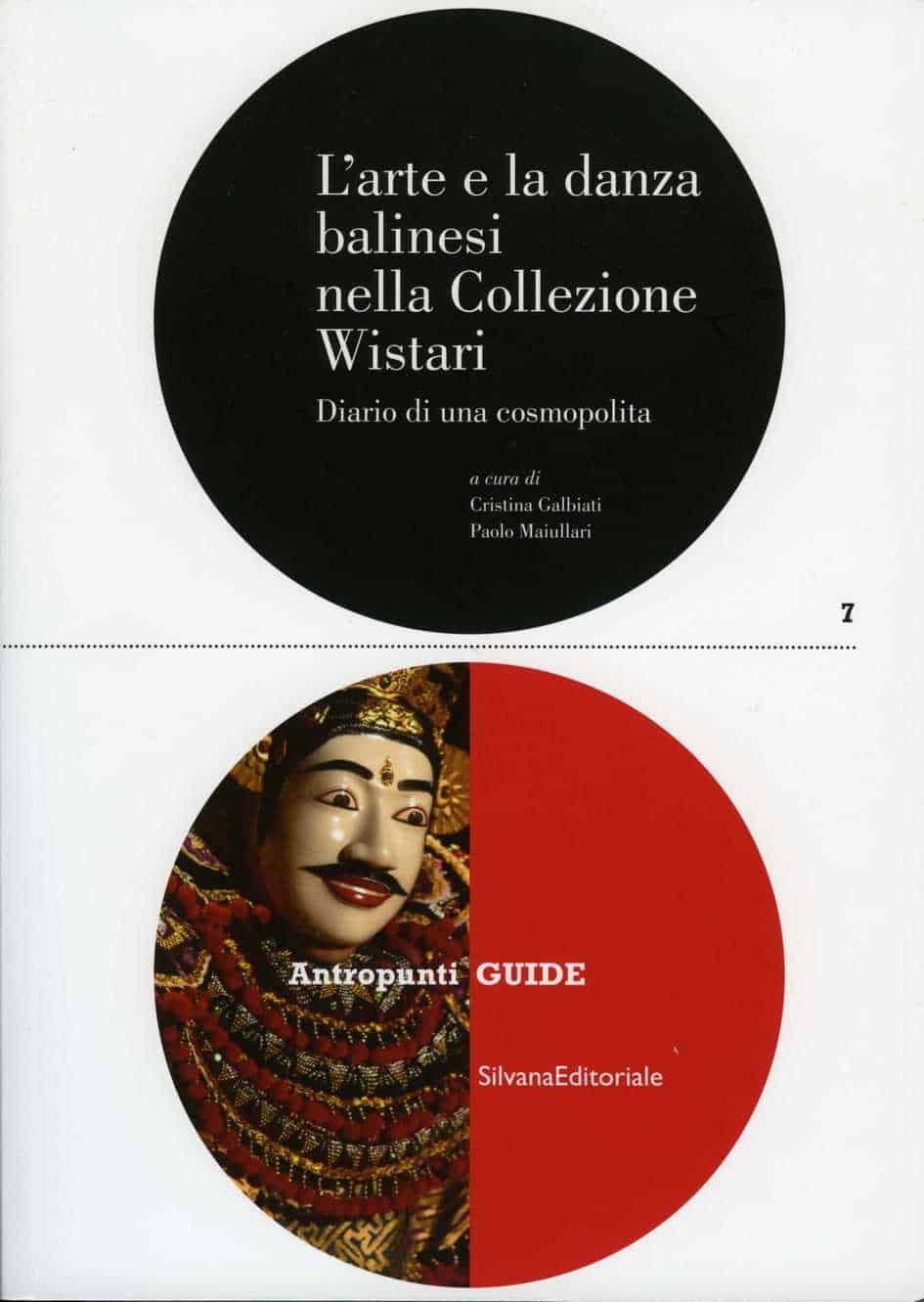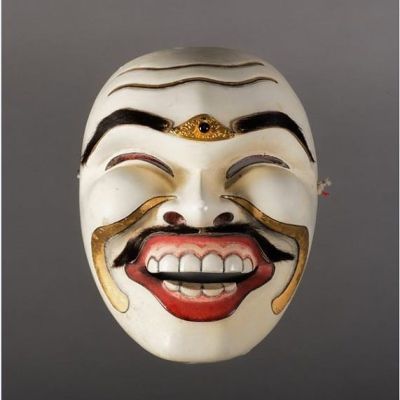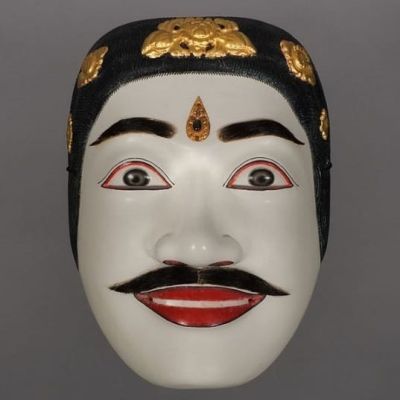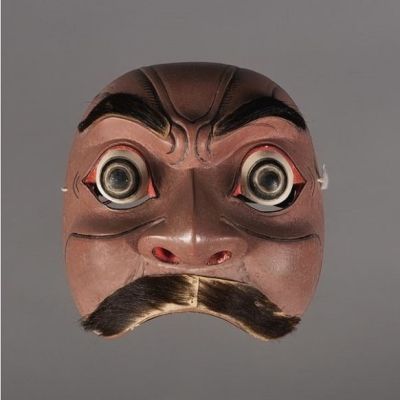HELENEUM – LUGANO
The exhibition is dedicated to the refined, lively and powerful artistic expressions of traditional Balinese festivities and ceremonies, representing the history and cultural tradition of the people who inhabit the most famous island of the Indonesian archipelago. Curated by Cristina Galbiati and Paolo Maiullari, the exhibition is set up on the ground floor of the Heleneum. The design and realisation of the exhibition are by the MUSEC Conservation and Museum Technology Laboratory. The 50 works on display are presented to the public according to an exhibition itinerary organised in three sections that address the following thematic cores: the masked ritual dance (topeng); the archetype of Balinese dances (gambuh); Balinese theatre and the encounter with Europeans. The exhibition recreates a thematic itinerary characterised by an atmosphere as close as possible to that of the contexts in which the performances take place, recalling them with vivid colours, but also hinting at the ceremonial dimension, that still today animate the places of the Balinese people. The exhibition is also accompanied by an exclusive interview given by Cristina Wistari in Bali, curated by Odin Teatret in Holstebro (Denmark), presented to the public in its entirety for the first time. On show is a selection of 32 masks – depicting gods, demons, court and people characters -, eight elaborately decorated headdresses, two dance costumes and a selection of accessories needed for the performance. The exhibition is completed by a large painting, a selection of 16 photographs documenting the oldest form of Balinese dance (gambuh) and the original programme of Balinese music and dance performances first presented in Europe at the 1931 International Colonial Exhibition in Paris.

The Wistari Collection and Archive united at MUSEC
In the 25 years she spent in Bali, Cristina Wistari amassed an important collection of Balinese artefacts relating to her work as a dancer, including masks, costumes, headdresses, fans, daggers and other accessories necessary for her performances. This is an important collection consisting of 61 works or groups of works amounting to a total of approximately 150 artefacts, comprehensively documenting the tradition, roles and aesthetics of the dances studied and practised by Wistari. Particular reference should be made to the principal core of the collection, consisting of 35 masks, many of them produced by some of the island’s leading mask-makers, whose quality constitutes a paradigm of Balinese sculptural art. The Wistari Collection was donated to MUSEC in 2014 by Alberta and Ettore Formaggia, siblings and heirs of Cristina Wistari. In Bali, in addition to studying and practising dance, since 1993 Cristina Wistari has been engaged in the difficult task of preserving a number of traditional dance forms, including the oldest of all – called gambuh – to which she dedicated an important monographic study of over 600 pages published by Lontar, Jakarta, in 2001. The heterogeneous materials collected in the field by Wistari form an archive made up of paper, photographic and audio-visual documents that she has collected with care and passion since the 1970s, at the time of her first trips to the East. These documents mainly refer to choreographic forms from countries where Cristina Wistari lived and where, thanks to direct contact with great masters, she was able to learn the secrets of traditional arts. Those relating to gambuh dance undoubtedly comprise the majority. Among the numerous materials collected and documents produced by Wistari are the approximately 1,000 photographic images documenting the postures and contexts of the topeng, gambuh and calonarang dances, almost 600 of which were taken for the gambuh conservation work by the famous Indonesian photographer Rio Helmi. The Archive was also donated by the heirs to MUSEC. Its contents have the peculiarity of bearing witness, over several decades, to Cristina Wistari’s professional career as a dancer and scholar, and for this reason they form an organic whole with the Wistari Collection of works of art and material culture. For the study of the Archive’s documentation, MUSEC has established a collaboration agreement with the Odin Teatret in Holstebro (Denmark), where the materials were deposited from 2009 to 2014.
MUSEC’s enhancement work
The temporary exhibition is the result of a scientific project developed by MUSEC since 2012, with the support of the “Ada Ceschin and Rosanna Pilone Foundation” in Zurich and in collaboration with Odin Teatret and Festa Danzante, a nationwide event whose tenth edition took place from 8 to 10 May 2015. The Wistari Collection and Fund were the starting point for the study and research into artistic expressions and the meanings and values of traditional Balinese choreographic performances. MUSEC’s research and valorisation work has been directed in three different directions the historical-artistic and anthropological study of the works, which has illustrated their history, materials, production techniques, functions, meanings, context and the particular value of the artist and the roles presented in the performances; the encounter between Balinese theatre and European audiences, which took place with the first Balinese dance performances held at the 1931 International Colonial Exhibition in Paris; the valorisation of the figure of Cristina Wistari and her project for the preservation and enhancement of Balinese dances, including the gambuh, the oldest of all, the original source of the dramatic genres that followed it, which was at risk of being historicised in the early 1990s. The project resulted in a temporary exhibition presenting to the public a selection of artworks from the Wistari Collection used in ceremonial and playful performances by the famous Italian dancer of Balinese dances, Cristina Wistari.
Cristina Wistari
Cristina Wistari (Milan 1945-2008) was a classical Balinese theatre dancer for over twenty years. She lived in Bali from 1983, the year in which she began to study gambuh (court dance), topeng (masked dance) and calonarang (dance related to magical practices) with I Made Djimat, one of the greatest living Balinese dancers, at whose side she danced for over sixteen years. Since 1985, she has been considered a ‘Balinese’ dancer in her own right, and as well as in theatres, she has danced in temples during Balinese ceremonies. She has performed and held topeng workshops all over the world, in countries such as Australia, Brazil, Holland, France, Switzerland, Italy and Denmark. Since 1995 she has been part of the ensemble of Eugenio Barba’s Theatrum Mundi – founder and director of the prestigious Danish theatre workshop Odin Teatret.




